You can find fruit in just about every color under the sun, but the number of red fruits that grow across the world is especially impressive.
Red fruits don’t just look vibrant and appealing – studies have shown that it is common for red fruit to contain high levels of antioxidants (substances that slow down cell damage and fight inflammation).

So, if you’re trying to introduce more healthy, beneficial foods into your diet, red fruits are a great place to begin.
Without further ado, let’s take a look at 21 delicious red fruits you should look out for in nature or the grocery aisle!
1. Red Apple
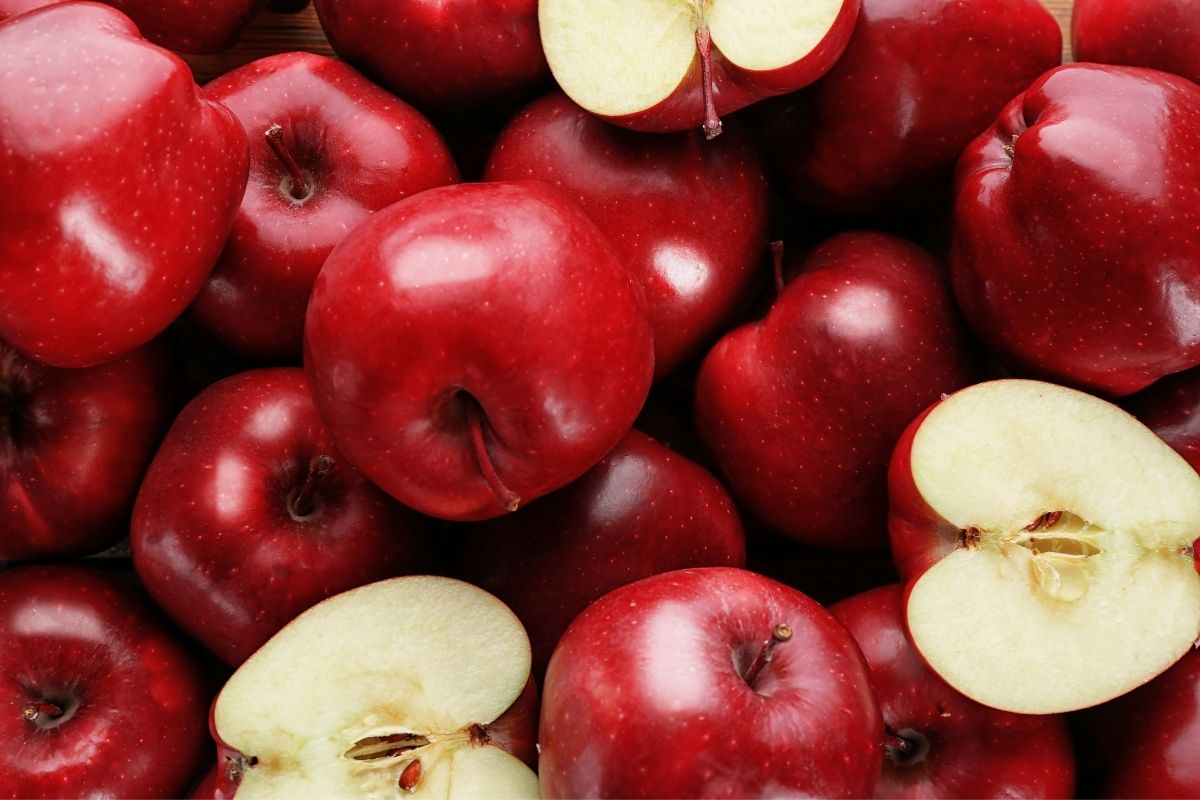
Although apples come in many different colors, including yellow and green, red apples are some of the most emblematic and widely-consumed fruits in the United States.
The story of Snow White may have created associations between red apples and poison, but in fact, red apples contain plenty of important nutrients, including fiber and antioxidants.
2. Cherries
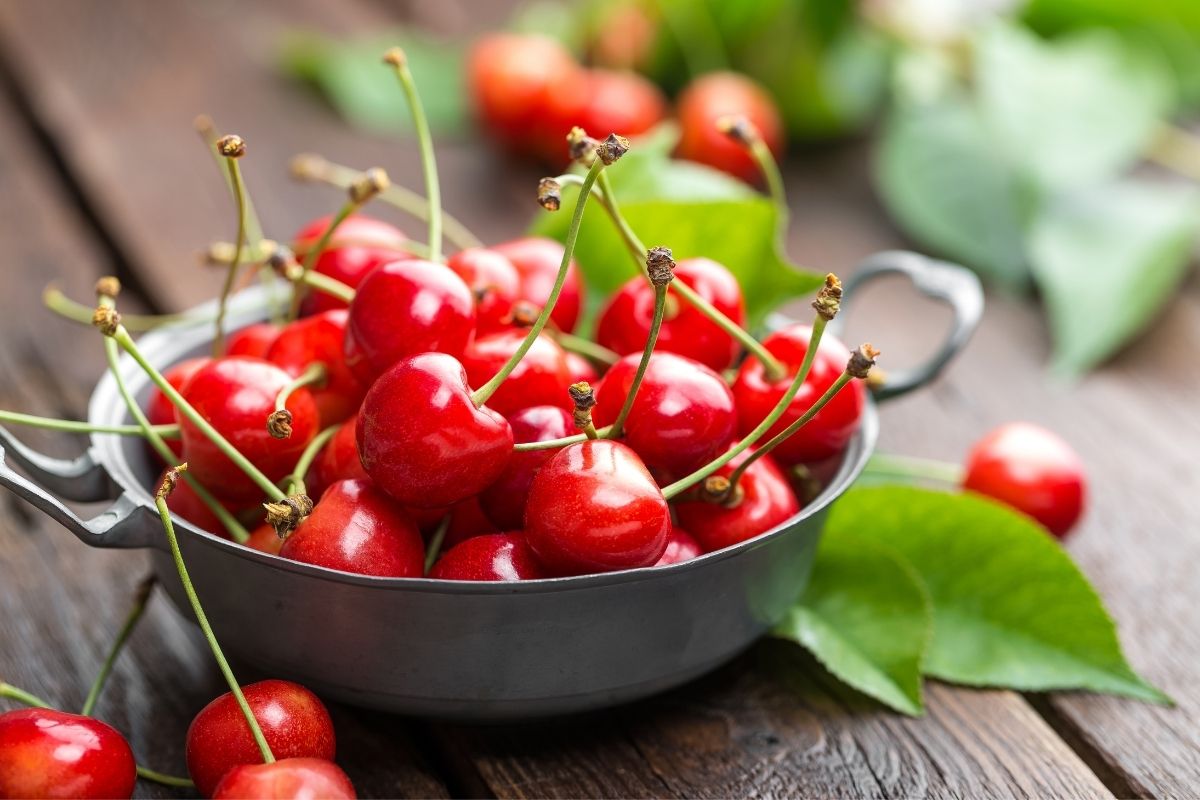
Cherries are absolutely delicious, featuring in many popular desserts, from cherry pie to ice cream sundaes! But the cherry is far more than just a tasty treat.
Because of their high antioxidant content (consistent with the trend noticed in red fruits), cherries have anti-inflammatory properties. It’s also been suggested that cherries might help to lower blood pressure and bad cholesterol levels.
3. Strawberries

The strawberry is another favorite fruit of the United States. A study conducted in 2020 showed that strawberries were the third most consumed fruit in the U.S. during that year.
You can find so many different foods in strawberry flavor, from bubblegum to ice lollies, but real strawberries provide the nutritional benefits of vitamin C and potential blood sugar regulation, amongst other things.
RELATED: Time Is Of The Essence: The Timeline Of Growing Strawberries
4. Raspberries
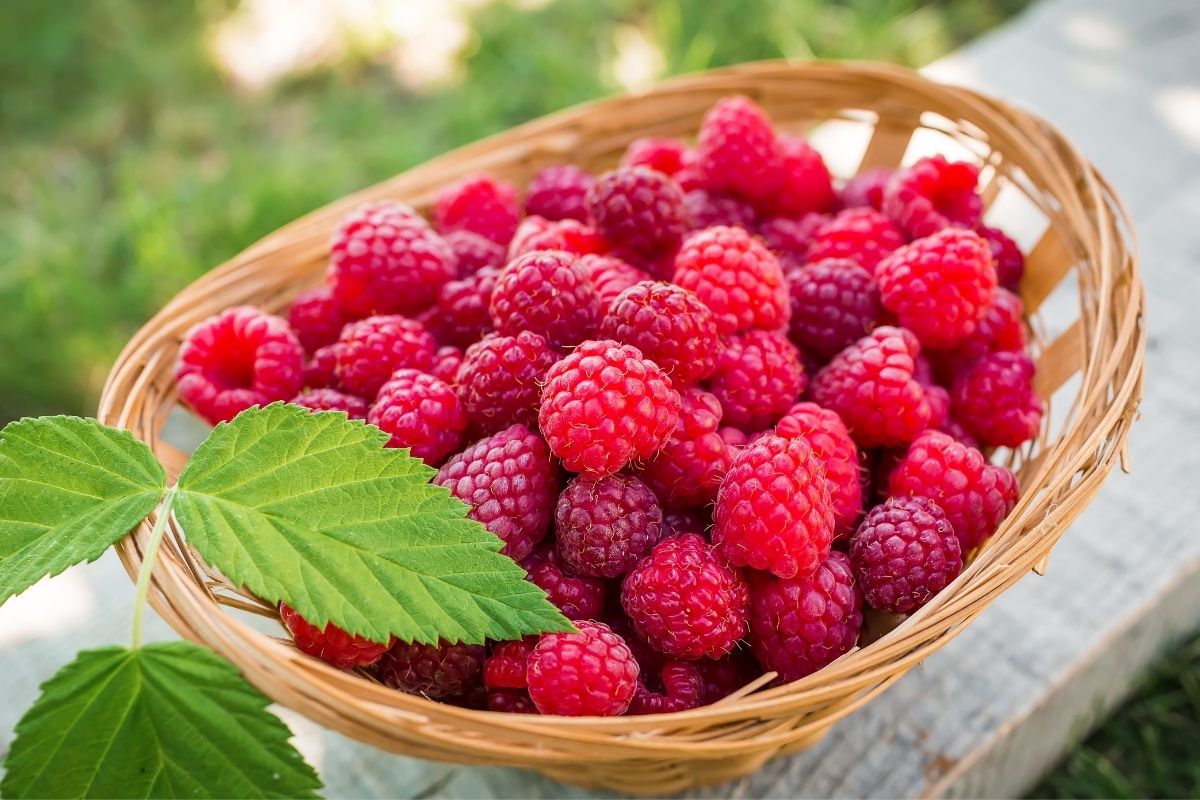
Raspberries can vary in color from white to bright red, but most of us associate raspberries with a deep pink or red hue.
There are over 200 species of raspberry, but you might be surprised to learn that we only typically see 2 of these in grocery stores.
Additionally, raspberries contain more vitamin C per gram than oranges, which is the perfect excuse to eat more of them!
5. Pomegranate

The pomegranate is a fruit with a lot of symbolic significance. Originating from the Middle East, pomegranates have come to be associated with rebirth as well as fertility due to their many internal seeds.
Technically, pomegranate is a type of berry, and it’s actually considered a superfood because it is rich in iodine and Omega-3 fatty acids which many people struggle to get enough of in their diets.
6. Red Pepper
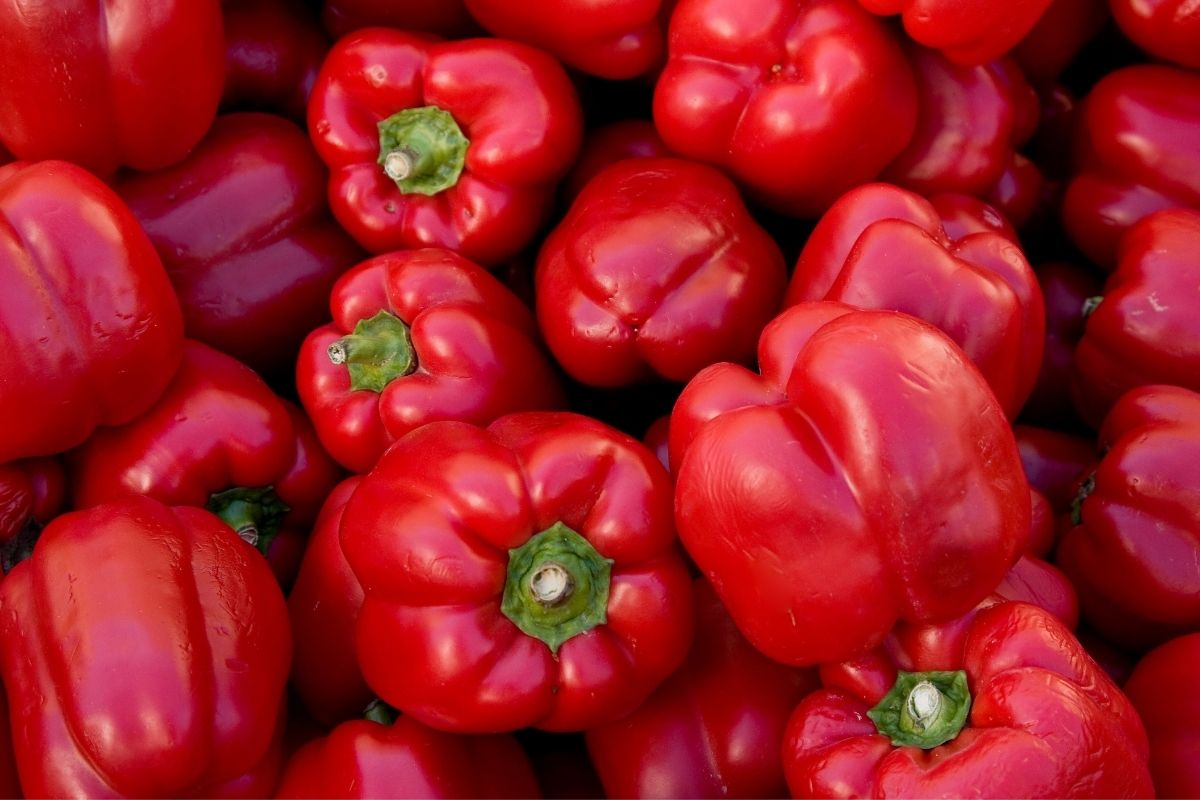
This one might come as a surprise because red peppers are typically viewed as vegetables due to their inclusion in primarily savory dishes. However, red peppers are actually fruits, which can be determined by the presence of seeds.
The red pepper is an especially good source of vitamin C as well as several antioxidants, and they may help to improve ocular function.
7. Watermelon
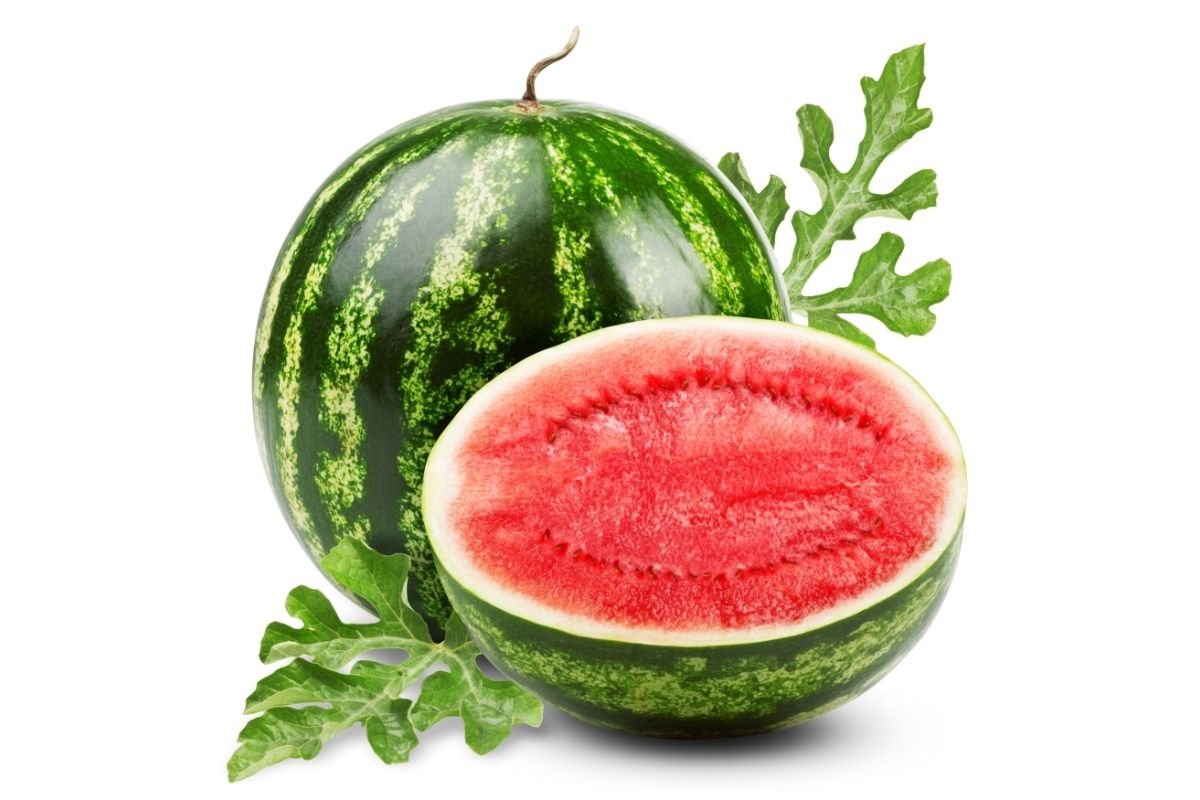
The flesh inside a watermelon can range from dark pink to a darker red shade, but regardless of the interior color of your watermelon, this fruit is really good for you!
They are 92% water and contain lycopene, which may help to lower certain cancer risks. And did you know that watermelons are simultaneously considered fruits and vegetables? They are a member of the gourd family, which also includes squashes and pumpkins.
8. Red Grapes
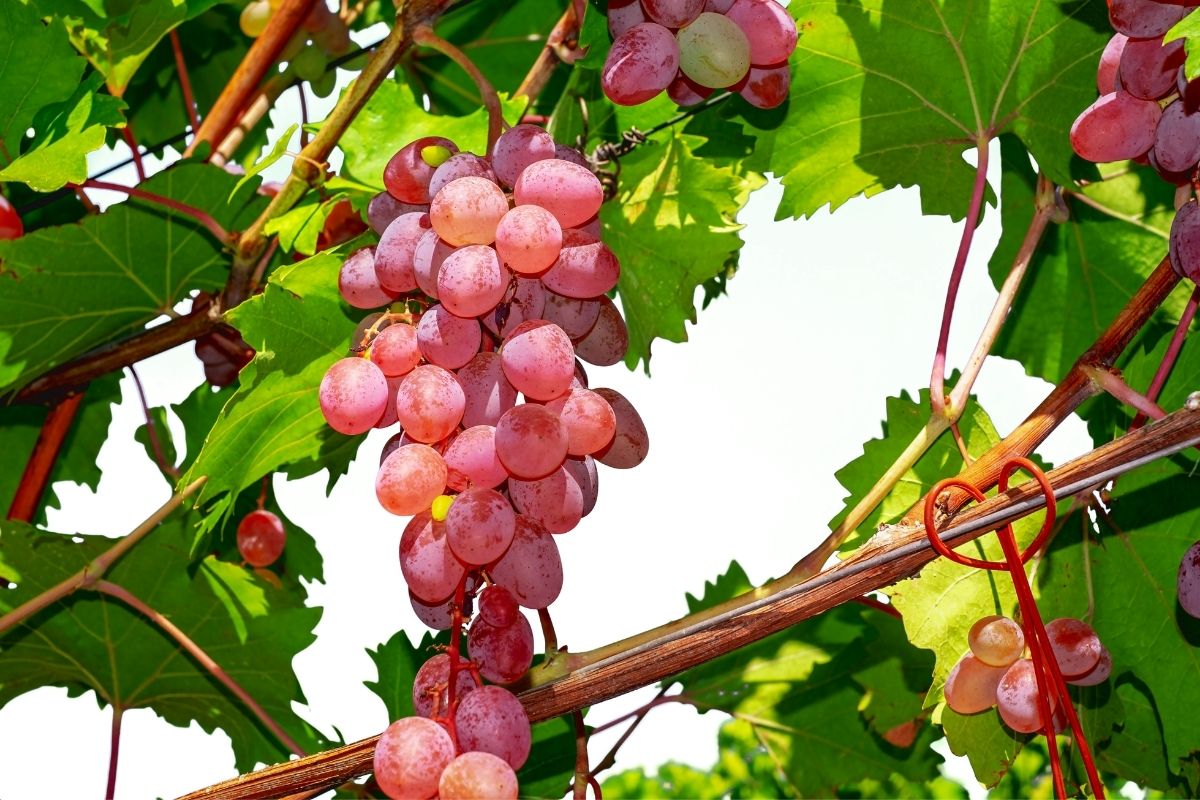
Grapes are often green in color, but red grapes (also sometimes called purple grapes) are just as delicious and nutritious.
Red grapes contain many antioxidants, hence why scientists have shown that an occasional glass of red wine can actually be good for you. Red grapes are also lower-calorie than green grapes.
9. Lychee
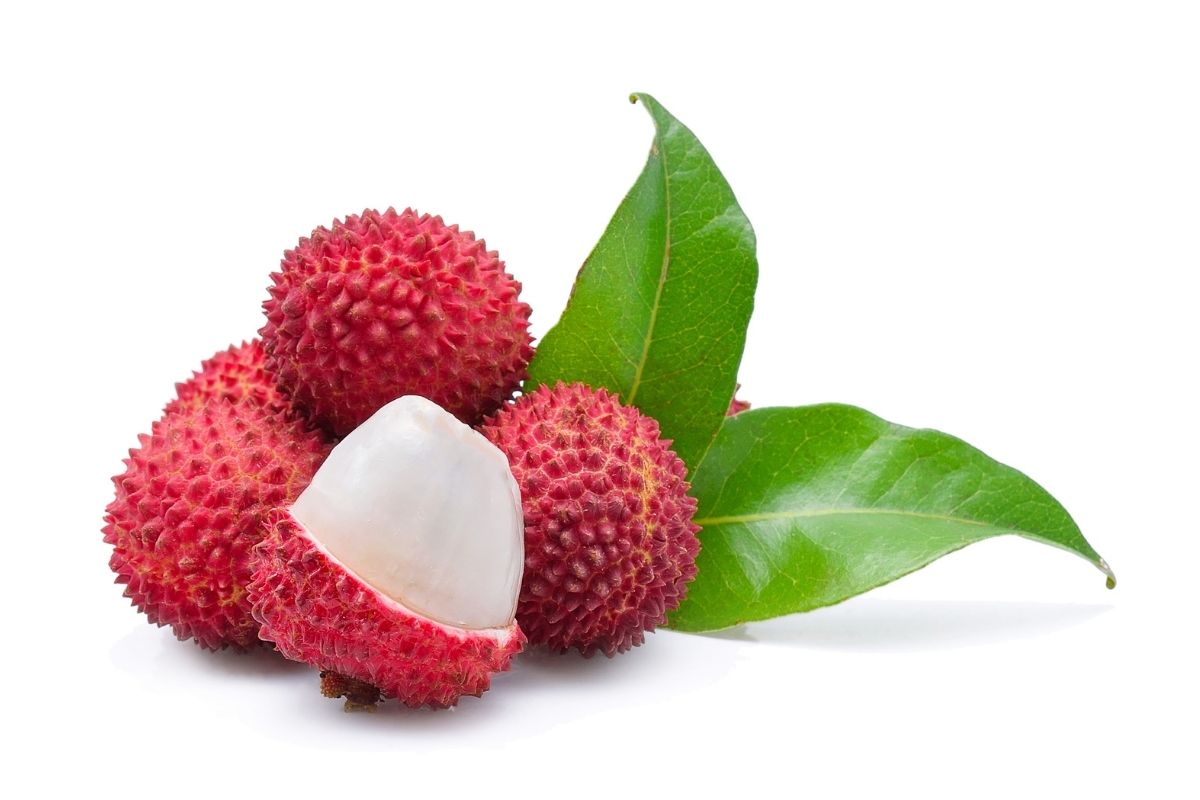
Technically, some might not consider lychees red fruits because they have white flesh, but the bright red shell of the lychee is part of this fruit’s appeal.
Beyond that, though, lychees are high in potassium and dietary fiber. Unripe lychees can make a person sick if eaten on an empty stomach, however, so make sure your lychees are fully ripened before eating.
10. Blood Orange
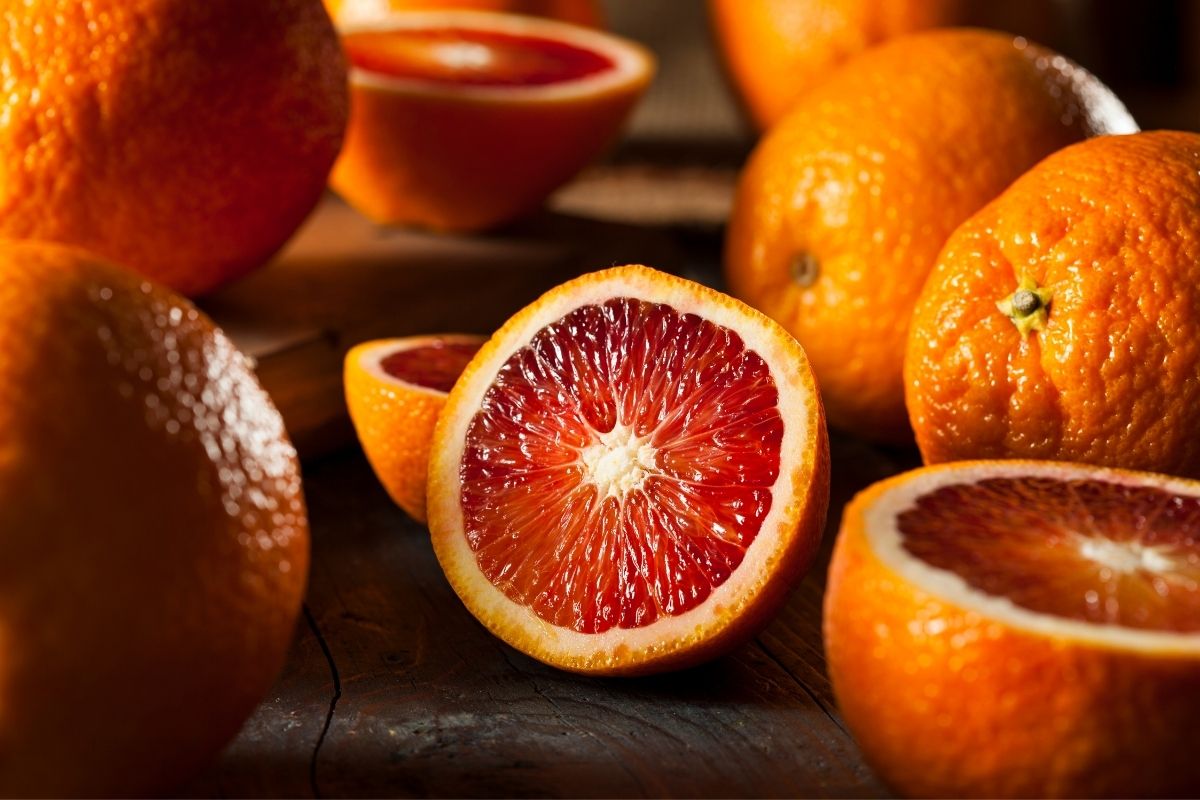
The blood orange differs from regular oranges in that they contain anthocyanins, which are actually what provide blood oranges with their red color.
Anthocyanins are antioxidants, which means that they have anti-inflammatory properties that can help to prevent or reduce certain cancers.
Because blood oranges are citrus fruits, they are high in vitamin C and their consumption is associated with better immune function.
11. Redcurrants
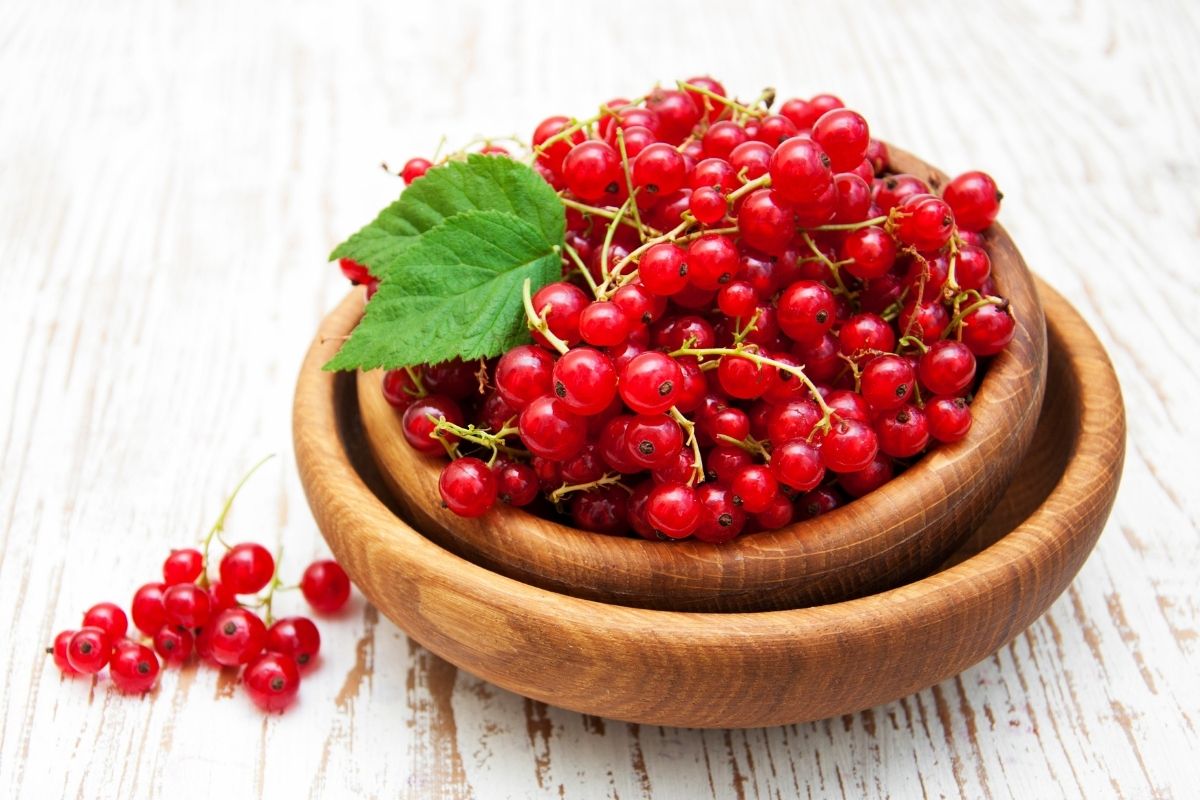
The redcurrant is a type of gooseberry that grows from a bush in bunches. Redcurrants have a distinct tart, yet sweet flavor and are incredibly juicy considering their small size.
In addition to being high in antioxidants, redcurrants (like many currant berries) contain lots of magnesium, zinc, potassium, and iron.
12. Tomatoes

Just like red bell peppers, tomatoes are commonly mistaken for vegetables when they are actually fruits. Tomatoes come in different colored varieties, but red tomatoes are the most popular and widely known.
Tomatoes are beneficial for heart health, and a single serving of this fruit contributes 5% of the average adult’s daily potassium intake.
RELATED: What Is Eating Holes in Your Tomatoes? | Causes and Solutions
13. Dragon Fruit

Dragon fruit (which you may also hear called strawberry pear or pitahaya) is similar to the lychee in that while it is bright red on the outside, it has white flesh.
Despite this, dragon fruit possesses many of the same benefits as entirely red fruits, including impressive levels of antioxidants. Eating dragon fruit may improve gut health because it contains prebiotics.
14. Cranberries

Cranberries can easily be confused for redcurrants due to their color and small size, but cranberries are part of the Ericaceae family.
Because of the antioxidants in cranberries, these fruits (especially in the form of cranberry juice) are often recommended as a home treatment for urinary tract infections. They also protect against certain stomach issues and cancers.
15. Red Pear
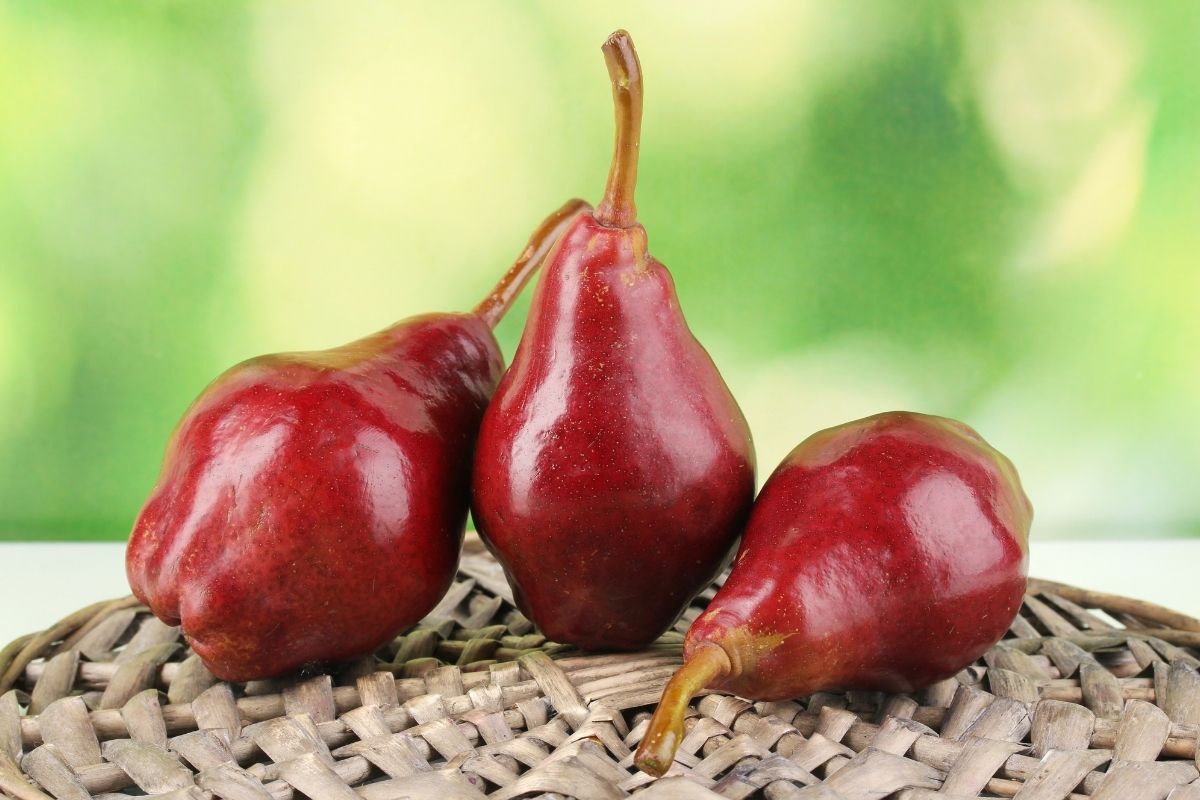
Pears are traditionally associated with a yellow or green color, but you can find red pears, too! Red pears are unique members of the Pyrus communis family.
For example, research has shown that red pears are more likely than other pear varieties to minimize the risk of developing diabetes. They are also great sources of fiber.
16. Grapefruit
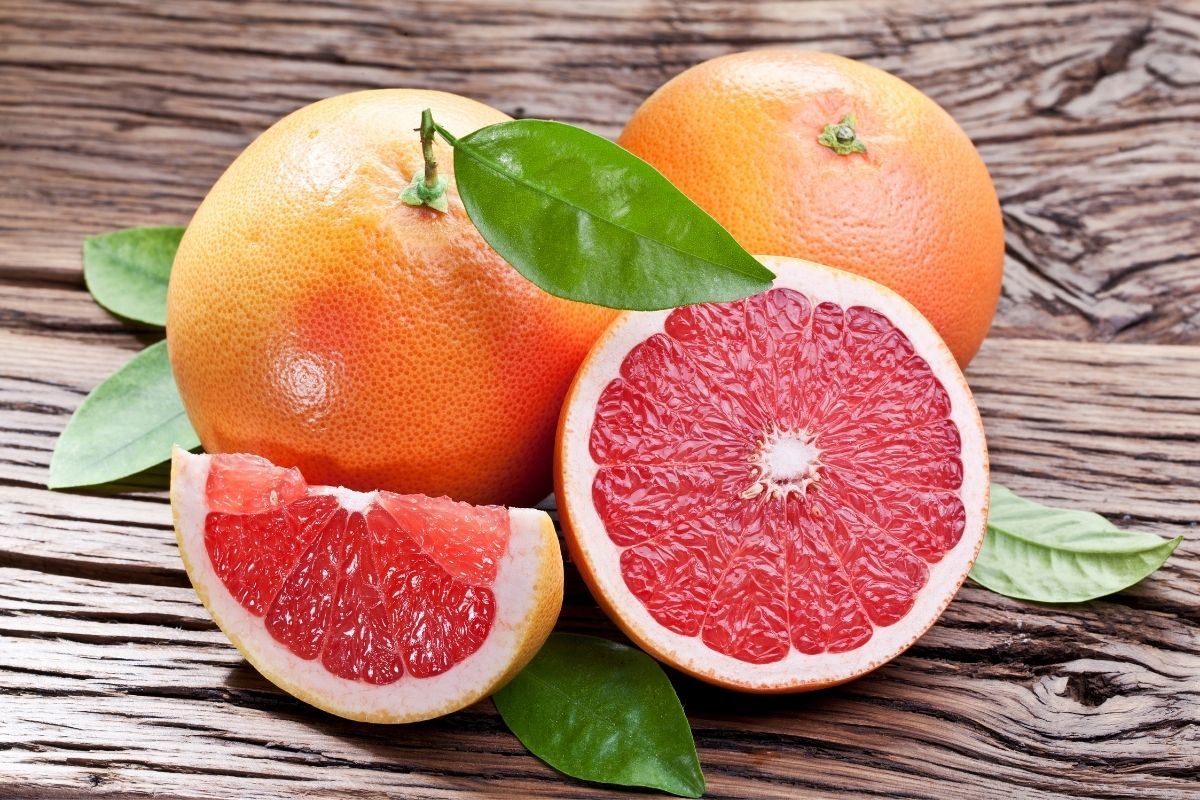
Grapefruits are orange on the outside, but inside, they are a darker red color.
As usual, the deep red shade inside a grapefruit is indicative of a high antioxidant content, but grapefruits have also been suggested to improve cardiovascular health and regulate blood sugar levels.
Grapefruit has also been associated with better brain function.
17. Red Cactus Pear
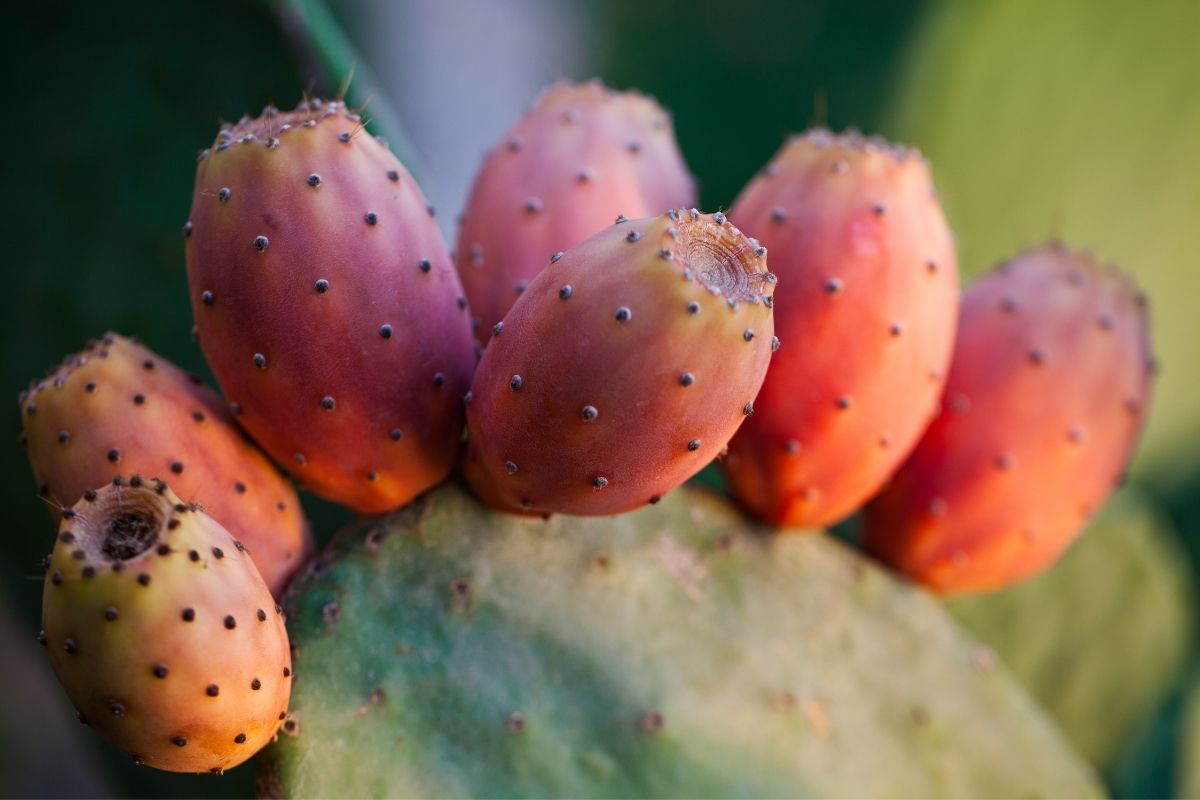
Cactus pears, also known as prickly pears, come in many colors, ranging from yellow to deep red. Red cactus pears, in particular, contain elevated levels of antioxidants, but they are also full of fiber.
Cactus pears are sweet enough to be eaten straight from the tree, but they only grow in dry, desert-like climates.
18. Victoria Plum
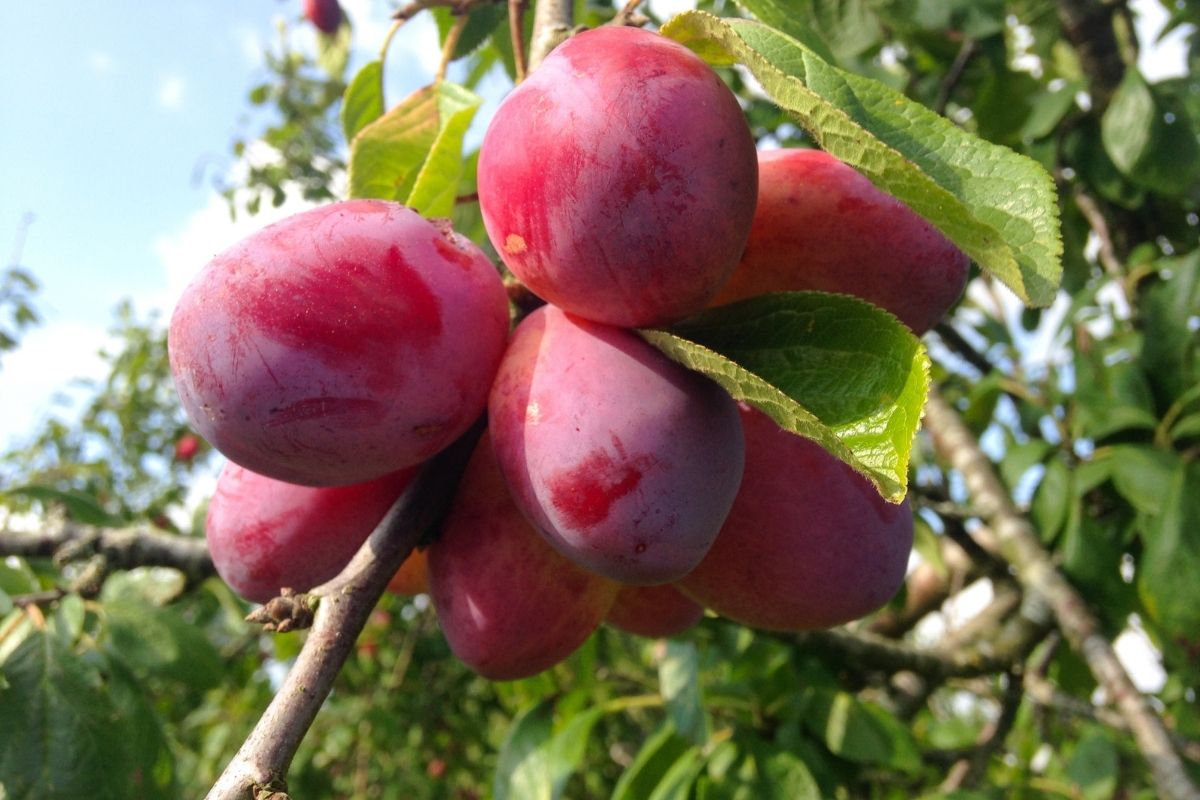
The plum is another fruit that has a wide color spectrum, encompassing shades of yellow, red, and purple. The Victoria plum is the species most associated with red coloring.
Victoria plums are deliciously sweet, and they are only 30 calories per fruit and contain lots of vitamin C, vitamin A, and vitamin K.
19. Hawthorn Berries
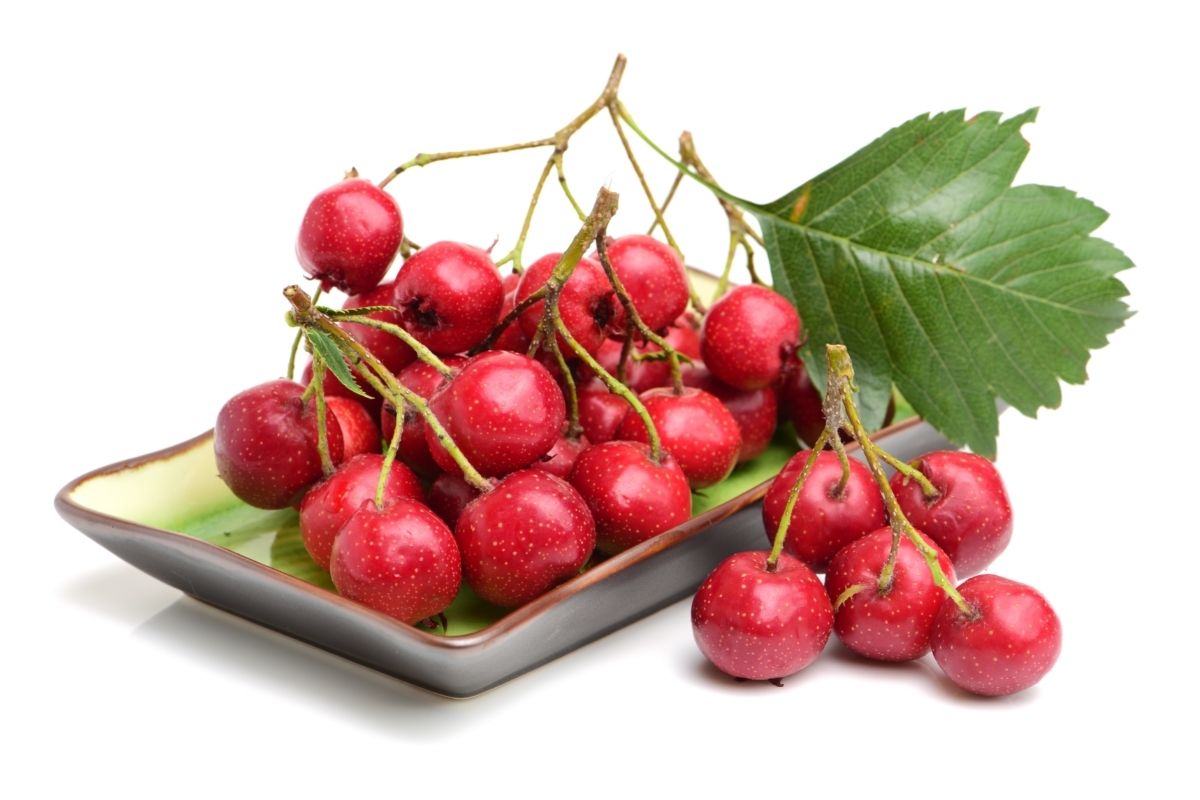
Hawthorn berries (also known as thorn apples or haws) grow on shrubs and trees, and planting a hawthorn shrub in your garden will likely attract a lot of birds, especially turkeys.
However, eating hawthorn berries in large quantities can cause a very upset stomach, so we recommend admiring these fruits from afar.
20. Figs

Figs are a brown-purple color on the outside, but inside, their flesh is a much brighter shade of red. Figs are a popular home treatment for digestive issues such as constipation and difficult digestion because they are high in fiber.
Fig consumption has also been linked to improved bone health and healthier blood pressure.
21. Dates
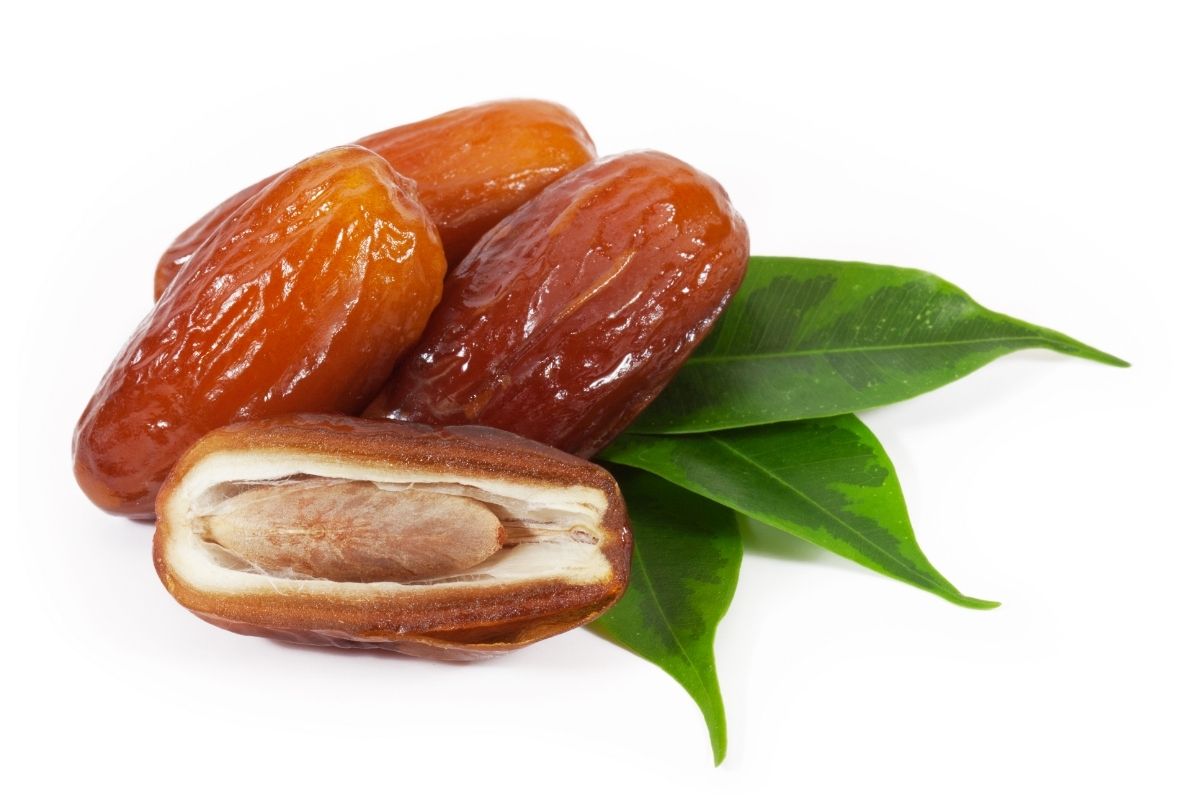
Finally, we also consider dates to be red fruits because they turn a red-brown color when fully ripened. Dates grow on a tree called the date palm tree, which is thought to be native to North America.
Eating dates regularly may help your digestion due to their fiber content, while also assisting with brain function. They are very sweet, so they can be used as a natural sweetening agent.
Final Thoughts
As you can see, there are plenty of good reasons to learn more about red fruit and incorporate them more regularly into your diet.
These fruits are, in general, good sources of antioxidant compounds, and many provide high levels of vitamin C.
While the majority of these fruits have both proven and speculated health benefits for humans, ranging from easier digestion to lower cancer risks, some (such as hawthorn berries) can be dangerous in large quantities, so never eat a red fruit you come across in nature without a specialist identification and confirmation of safety.







